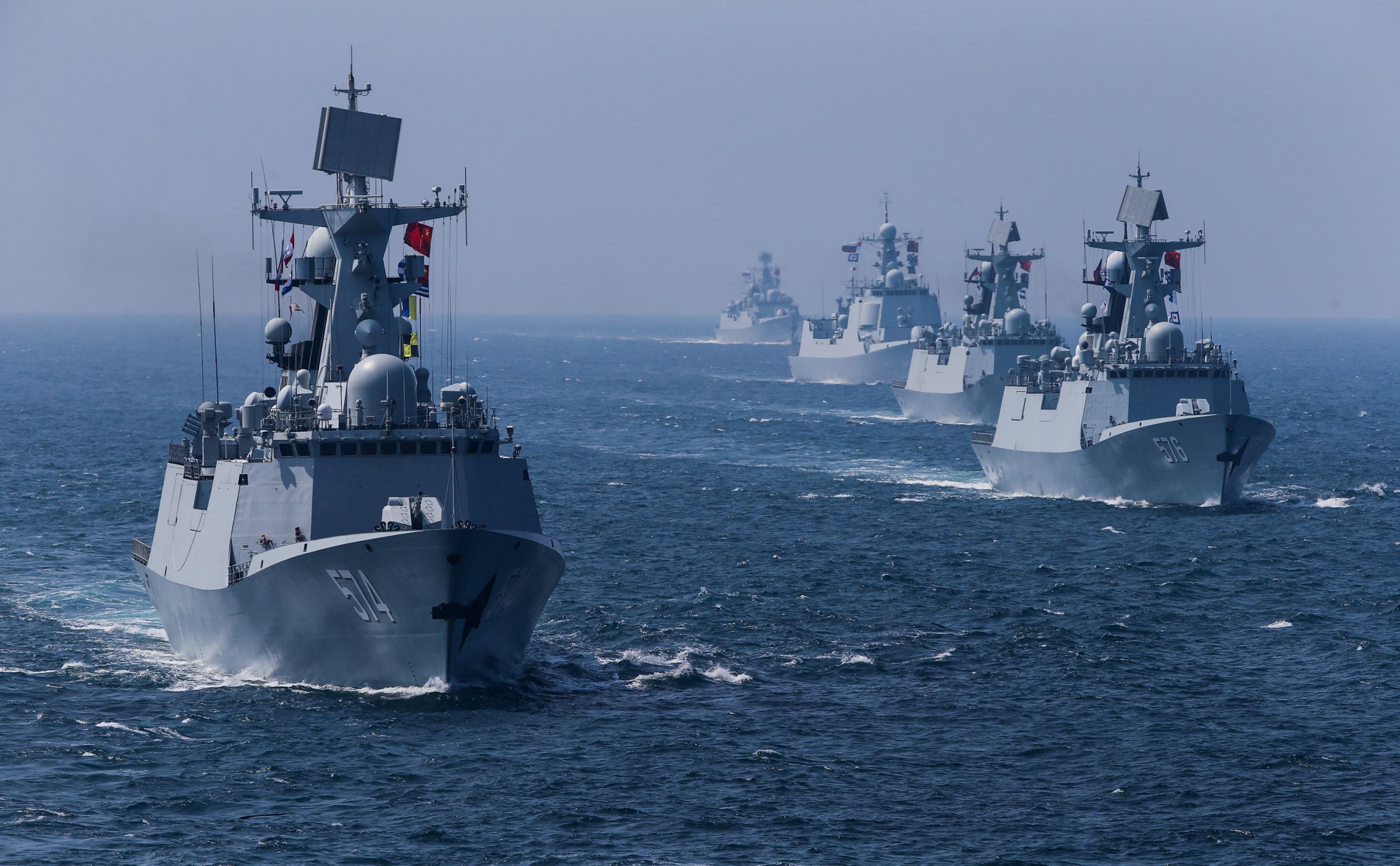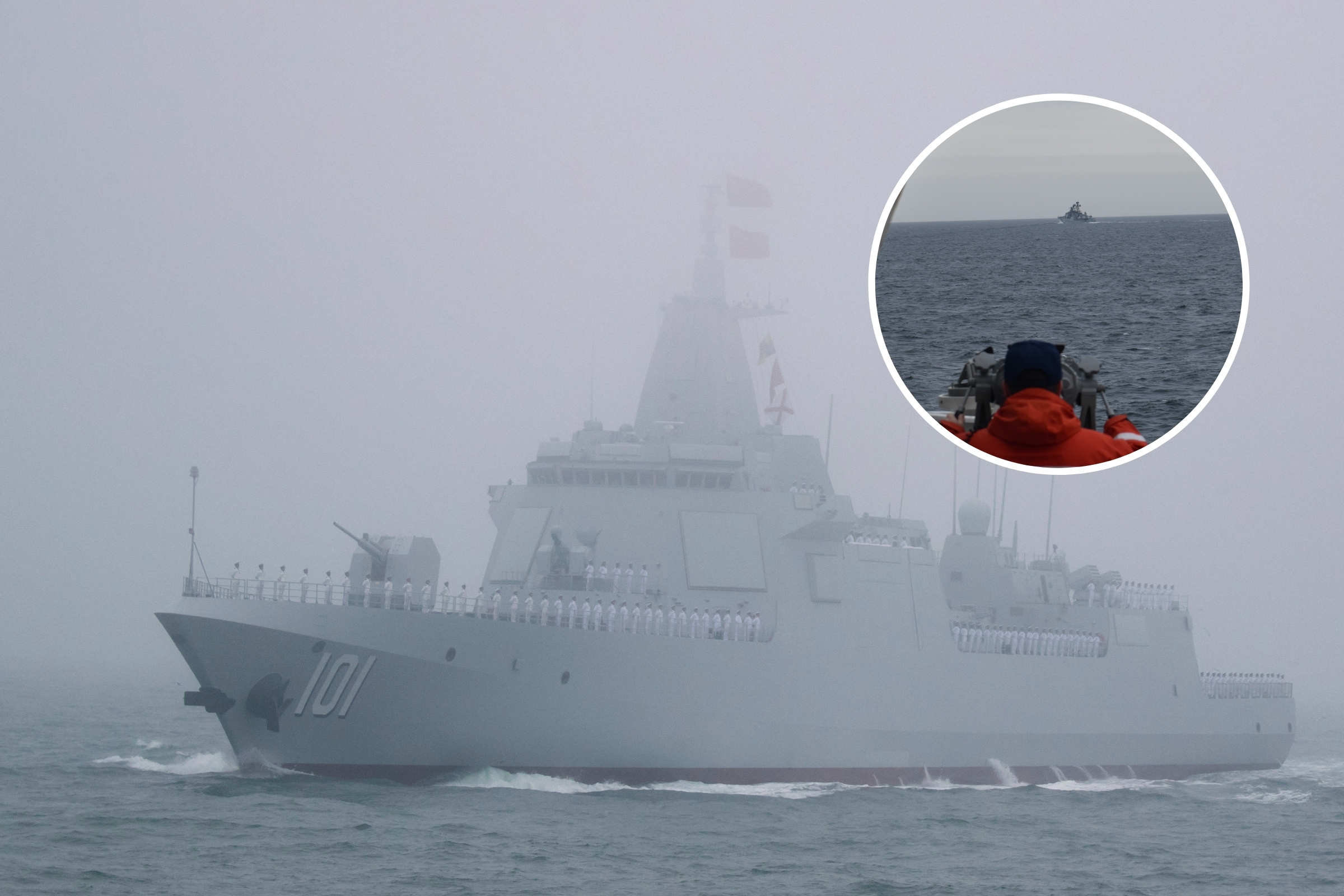How did the Russian Navy come to be, how is it structured, and what is its global reach? Russian Navy: History, Structure, And Global Reach explains all of this in detail.
Editor's Note: Russian Navy: History, Structure, And Global Reach was published on today's date. Understanding this topic is important because it provides insights into the history, structure, and global reach of the Russian Navy.
We analyzed and dug into the information deeply to provide you with this guide to help make an informed decision.
Key Differences / Key Takeaways

South China Sea: Chinese Military Unveils First of 18 'New Generation - Source www.newsweek.com
FAQ
This FAQ section provides concise answers to frequently asked questions about the Russian Navy, covering its history, structure, and global reach.

Top 10 vessels that glorified the Russian Navy - Russia Beyond - Source www.rbth.com
Question 1: When was the Russian Navy established?
The Russian Navy traces its origins to the 17th century, with the establishment of a regular navy by Tsar Peter the Great in 1696.
Question 2: What is the current structure of the Russian Navy?
The Russian Navy comprises various fleets, including the Northern Fleet, Pacific Fleet, Baltic Fleet, Black Sea Fleet, and Caspian Flotilla. Each fleet is responsible for specific geographical areas and maintains a range of ships, submarines, and aircraft.
Question 3: What is the size and composition of the Russian Navy?
The Russian Navy is one of the largest in the world, with an estimated personnel strength of over 200,000 and a fleet of around 600 vessels, including nuclear-powered submarines, surface ships, and support vessels.
Question 4: What is the global reach of the Russian Navy?
The Russian Navy maintains a global presence, with ships and submarines deployed in various oceans and seas. It has played a significant role in international operations, such as anti-piracy missions and humanitarian assistance.
Question 5: What are some of the challenges facing the Russian Navy?
The Russian Navy faces challenges related to modernization, funding, and geopolitical tensions. It seeks to upgrade its aging fleet, enhance its capabilities, and maintain its global reach.
Question 6: What are the future prospects for the Russian Navy?
The Russian Navy is expected to continue playing a crucial role in national security, power projection, and global affairs. It aims to expand its capabilities through technological advancements and modernization programs.
For more detailed information about the history, structure, and global reach Russian Navy: History, Structure, And Global Reach, please refer to the dedicated article.
Tips
This section provides valuable tips to help readers gain a comprehensive understanding of the Russian Navy's history, structure, and global reach.
Tip 1: Dive into the History of the Russian Navy
To fully grasp the Russian Navy's present, it is essential to delve into its rich history that spans centuries. Explore the origins, key battles, and technological advancements that have shaped the force.
Tip 2: Understand the Structure of the Navy
Gain insights into the hierarchical organization of the Russian Navy, its branches such as the surface fleet, submarines, and naval aviation. Comprehend the roles and responsibilities of each component.
Tip 3: Map the Navy's Global Reach
Trace the presence of the Russian Navy across the globe. Identify its key naval bases, deployment patterns, and areas of operation. Understand its strategic objectives and global influence.
Tip 4: Study Naval Capabilities and Technologies
Examine the capabilities of the Russian Navy, including its surface ships, submarines, aircraft, and advanced weapon systems. Explore the latest technological innovations that enhance Russia's naval capabilities.
Tip 5: Analyze Russian Naval Doctrine
Decipher the strategic principles and operational concepts that guide the Russian Navy's activities. Understand the evolution of its doctrine and its implications for global security.
These tips will empower readers to navigate the complexities of the Russian Navy, unlocking a deeper understanding of its history, structure, global reach, and capabilities.
To delve further into the subject, continue reading the comprehensive article on the Russian Navy's history, structure, and global reach.
Russian Navy: History, Structure, And Global Reach
The Russian Navy, with its rich history, formidable structure, and expansive global reach, stands as a testament to the country's maritime prowess. Its evolution through the centuries, from humble origins to a modern-day superpower, underscores its significance.

Russische und chinesische Marineschiffe weniger wie 100 Meilen vor - Source ausderwelt.de
- Origins: Viking Roots
- Imperial Expansion: Peter the Great's Vision
- Modernization: Soviet Supremacy
- Structure: Fleet Composition
- Global Presence: Arctic Dominance
- Geopolitical Significance: Regional Influence
The Russian Navy's storied past, from the Vikings' raids to the Crimean War's naval clashes, reflects its enduring role in shaping Russian history. Its transformation under Peter the Great propelled Russia into the ranks of maritime powers, while the Soviet era witnessed its rise as a formidable naval force. Today, with a balanced fleet of surface ships, submarines, and aircraft, the Russian Navy maintains a formidable presence in the global arena, particularly in the Arctic, where its advanced capabilities grant it strategic advantage. Its strategic importance is further highlighted by its role in regional conflicts, demonstrating its profound impact on global affairs.

Death Match: America's Stealth Zumwalt Destroyer vs. Russia's Big - Source nationalinterest.org
Russian Navy: History, Structure, And Global Reach
The Russian Navy is the naval force of the Russian Federation. It is composed of surface ships, submarines, naval aviation, and coastal defense forces. The Russian Navy has a long history and played a major role in Russian and Soviet military history.

Army Casualty - Source ar.inspiredpencil.com
The Russian Navy is a global power, with a presence in all the world's oceans. It has a fleet of over 600 ships, including over 100 nuclear-powered submarines. The Russian Navy is also a major player in international security, participating in peacekeeping and anti-piracy operations around the world.
The Russian Navy is a vital part of the Russian armed forces. It provides a powerful deterrent against potential enemies and plays a key role in protecting Russian interests at home and abroad. The Russian Navy is also a major contributor to Russia's economy, providing jobs and supporting businesses.
Table: Russian Navy Fleet
| Type | Number |
|---|---|
| Nuclear-Powered Ballistic Missile Submarines | 10 |
| Nuclear-Powered Attack Submarines | 35 |
| Diesel-Electric Submarines | 20 |
| Cruisers | 10 |
| Destroyers | 15 |
| Frigates | 40 |
| Corvettes | 80 |
| Patrol Boats | 100 |
Conclusion
The Russian Navy is a powerful and versatile force. It is a key element of Russia's military power and plays a vital role in protecting Russian interests at home and abroad.
The Russian Navy is facing a number of challenges. The Russian economy is in decline, and the Russian Navy is feeling the effects. The Russian Navy is also facing aging ships and a lack of investment in new equipment. Despite these challenges, the Russian Navy remains a powerful force and is likely to remain a major player in international security for years to come.
